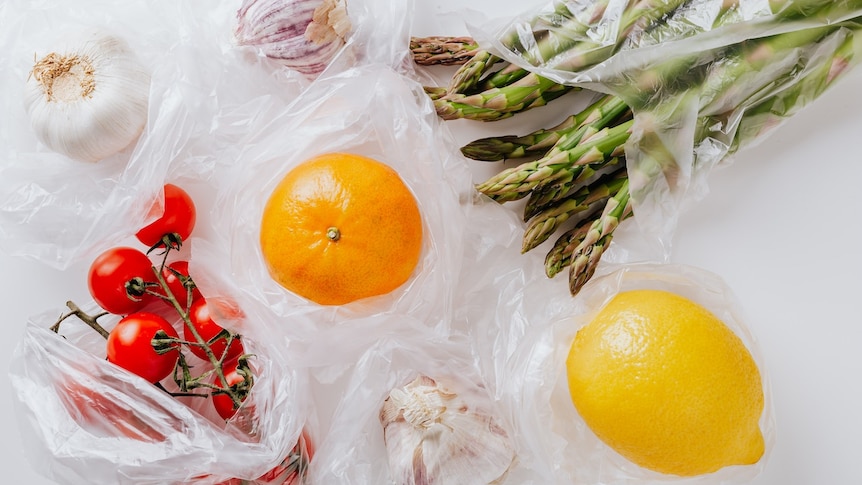Food Innovation Australia’s national food waste strategy argues reducing household food waste will require consumer behaviour change coupled with technical developments in packaging, and recommends improved portioning and better food date labelling.
According to Stop Food Waste Australia, a partnership tasked with implementing the waste reduction roadmap, about half of all food waste is fresh produce.
The partnership says it aims to improve packaging and product labelling, and “Transform surplus food and food processing wastes into new upcycled food products and ingredients”.
The Australian Fresh Produce Alliance also says that while packaging can extend the shelf life of fresh food, it must reduce packaging and find ways to produce plastic packaging from recycled materials.
That’s exactly what Federation University food scientist Dylan Liu hopes to achieve by turning food waste into food packaging.
OK, so biodegradation is basically dependent on microbes penetrating a material and digesting at least part of its chemical structure causing it to break down into simpler molecules. There are lots of hungry microbes in our world, so this process starts happening to basically any material they can get inside of. It will happen to you as soon as your immune system is no longer able to keep the hungry microbes away.
The problem is with the getting inside - most microbes live and travel in water. If a material is water-resistant it is almost impossible for it to biodegrade. This is one of the reasons plastic waste is such a problem - most waste plastic is water-impermeable, and so few if any microbes can digest it. This property is also what makes it useful - it can be handled, contain liquids, and be left outdoors for extended periods of time without failure. The same characteristic that makes plastic useful also makes it very difficult to get rid of (a lot of polymers never denature through normal exposure).
Food packaging will necessarily need to be water resistant. Even if you’re packaging a dry food, the point is to keep it dry (and therefore keep water out). So, even if you start with a naturally water-permeable biodegradable polymer, if you mess with its structure to make it water resistant (useful for food packaging) then it will no longer be biodegradable and thus won’t solve the waste problem.
This is the best summary I could come up with:
Scientists say they have found a way to divert food from landfill and convert it into biodegradable plastic wraps and cellophanes.
Almost 8 million tonnes of food worth about $40 billion are wasted each year in Australia, through on-farm and supply chain losses, in restaurants and supermarkets.
Nanocellulose is a tiny cellulose fibre that Dr Liu says is strong and flexible, making it ideal for food storage because it can be used to create cling film and other transparent packaging.
“Quality and safety are so important in the food industry, so if we can monitor that more closely it can potentially help people improve their health,” Dr Liu says.
Nanocellulose derived from food waste is biodegradable and safe in a range of fields, Dr Liu says, and the by-products of the production process can be used as a liquid fertiliser and solid feed for livestock.
And while Dr Liu says nanocellulose production isn’t the answer to all of Australia’s waste problems, it could go some way towards repurposing food that would otherwise be discarded.
I’m a bot and I’m open source!



